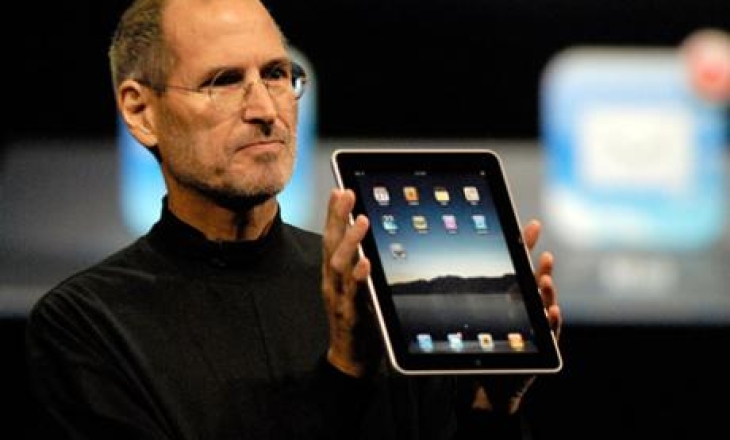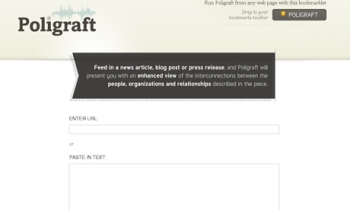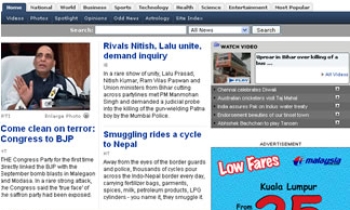Apple's iPad is killing print newspaper subscriptions, according to a new survey by the Donald W Reynolds Journalism Institute at the University of Missouri. However, its data also suggests the iPad is becoming a new channel for people's daily news, offering hope that at least some of the iPad-exclusive publications in the pipeline can succeed.
Users are predominantly well-educated, affluent men between the ages of 35 and 64 who tend to be early adopters.
- More than four-fifths (80.2%) of the responding users are men.
- More than half of all respondents (55.6%) report a household income of at least $100,000 a year.
- More than three quarters (76.3%) have at least a bachelor's degree, with 38% of all respondents with at least a master's degree.
- More than two-thirds (69.5%) are between the ages of 35 and 64. The average age of all respondents is 48.
- Nearly half (44.6%) of the respondents were early adopters, acquiring their iPads in April or May 2010.
Overall satisfaction and time spent with the iPad are very high.
- More than nine out of 10 respondents rated their overall satisfaction as either very satisfied (70.2%) or somewhat satisfied (23.4%).
- More than three-quarters (76.1%) indicated that they are very likely to recommend the iPad to a friend or relative.
- More than six out of 10 (62.7%) reported that they spent more than an hour during a typical day with their iPad, with nearly three out of 10 (28.3%) saying they used their iPad more than two hours a day.
- Nearly nine out of 10 (89.0%) indicated that they use their iPad throughout the week, with nearly three-quarters (73.1%) reporting that they use it most frequently at home.
Keeping up with news and current events is their most popular main use.
- Using the iPad to follow breaking news reports and current events is the most popular use for the device, with 84.4% of respondents saying this is one of their main uses. Next according to popularity: leisure reading of books, newspapers and magazines (81.5%); browsing the Web (80.8%); and e-mail (75.8%).
- More than three quarters (78.6%) of the users spent at least 30 minutes during a typical day consuming news on their iPad. Respondents spent a similar amount of time with other media at a much lower rate: television (52.5%), personal computers (50.7%), printed Sunday newspapers (30.7%), printed weekday newspapers (18.8%).
- Nearly half (48.9%) of the respondents said they spent an hour or more during a typical day consuming news on their iPad.
iPad news consumers prefer newspaper apps to newspaper websites; less likely to use print.
- The vast majority of those who read at least an hour's worth of news on their iPads each day — more than nine out of 10 — said they are either very likely (71.8%) or somewhat likely (21.2%) to use a newspaper's app for reading news and feature stories as opposed to using a Web browser to navigate the newspaper's website. The trend is similar even among lighter iPad news users, suggesting that users who consume news on the iPad tend to prefer to do so using an app.
- Users who consume news regularly do so across multiple media. However, correlation analysis shows that the more one uses the iPad for news consumption, the less he or she uses printed newspapers. While these negative correlations between iPad news use and printed newspaper use aren't incredibly strong, they are statistically significant.
- Among the 931 respondents who indicated that they currently subscribe to print newspapers, there is a statistically significant, moderately strong, positive correlation between iPad news consumption and the likelihood of canceling their print subscriptions. For example, more than half (58.1%) of the respondents who subscribe to printed newspapers and use their iPad at least an hour a day for news said they are very likely to cancel their print subscriptions within the next six months.
- More than three out of 10 (30.6%) respondents indicated that they do not subscribe to printed newspapers, with another one out of 10 (10.7%) saying that they had already canceled their subscriptions to printed newspapers and switched to reading digital newspapers on their iPad.
- The more one uses the iPad to consume news, the more one is likely to use other digital media for news.
- About six out of 10 respondents implied that they had used an e-reader for some period of time prior to taking the survey. Of those, about 30% indicated that they had used it to consume news during a typical day.
- About three-quarters of the respondents implied that they had used an iPhone. Of those, about 70% indicated that they had used it to consume news during a typical day. About two-thirds implied that they had used a smartphone other than an iPhone. Of those, about 50% indicated that they had used it to consume news during a typical day. (Note: The overlapping data for iPhones and smartphones suggest that about half of the respondents have used both types of mobile phone either simultaneously or sequentially for some period of time prior to taking the survey.)
- Nearly nine out of 10 respondents (89.2%) said they used a personal computer for some period of time during a typical day to consume news.
- Nearly all of the respondents (99%) indicated that they used their iPad for some period of time during a typical day to consume news.
Positive iPad reading experience influenced by age, traditional media habits.
- Users were asked to rate their reading experience on the iPad compared to other media on a five-point scale (1=Much worse than, 5=Much better than). Reading experiences with the iPad, on average, were rated as being somewhat better than or about the same as their reading experiences with printed newspapers or magazines and personal computers. Nearly half of the respondents rated their experience with reading on the iPad as much better than their reading experiences with iPhones (48.1%) or other smartphones (47.2%).
- Age of the user influences how one rates reading experience on the iPad compared to other media. For example, the older the users, the more likely they are to rate their reading experience on the iPad worse than their reading experience with printed newspapers and magazines. On the other hand, older users also tend to rate their iPad reading experience much better than electronic devices with smaller screens, such as iPhones, smartphones, and netbooks.
- As might be expected, comparative media experience was strongly related to traditional media use, particularly with newspapers. For example, the more that respondents had read printed newspapers in the past 30 days, the worse they rated iPad reading experience compared to reading a printed newspaper.
Low prices and ease of use are key factors in users' decisions to purchase newspaper subscriptions on the iPad.
- When asked in an open-ended question what factors would influence the users' decisions to purchase news apps or newspaper subscriptions on their iPad, "a price lower than the price of a print subscription" was mentioned most often. Users also indicated that they want a very easy-to-use and reliable app, with access to at least all the content available in the printed edition. While respondents mention video and interactive features, they are much less commonly expressed in the survey than the aforementioned issues.
- We also asked users which news organizations have come closest to meeting their expectations on the iPad. Among the most popular responses: The New York Times, USA Today, The Associated Press, and The Wall Street Journal.
A deeper analysis of the initial survey data and open-ended questions will be published at a later date. Of the 1,609 respondents, 1,122 indicated that they would be interested in participating in the follow-up panel surveys planned for 2011. Based on the postal codes provided by respondents and the geodata attached to files, about 92% of respondents were located in the United States. All 50 states plus the District of Columbia, Puerto Rico and Guam are represented. The non-US respondents (8%) were located in at least 49 countries.
Apple iPad users were recruited through stories and links posted on multiple websites. We are especially grateful to The Associated Press for putting a promo with a hyperlink to the survey on its iPad app in October and November. This research project is headed by Roger Fidler, RJI Program Director for Digital Publishing and DPA coordinator. Adam Maksl, a Ph.D. student in the Missouri School of Journalism, is assisting with the data analysis and survey design.










